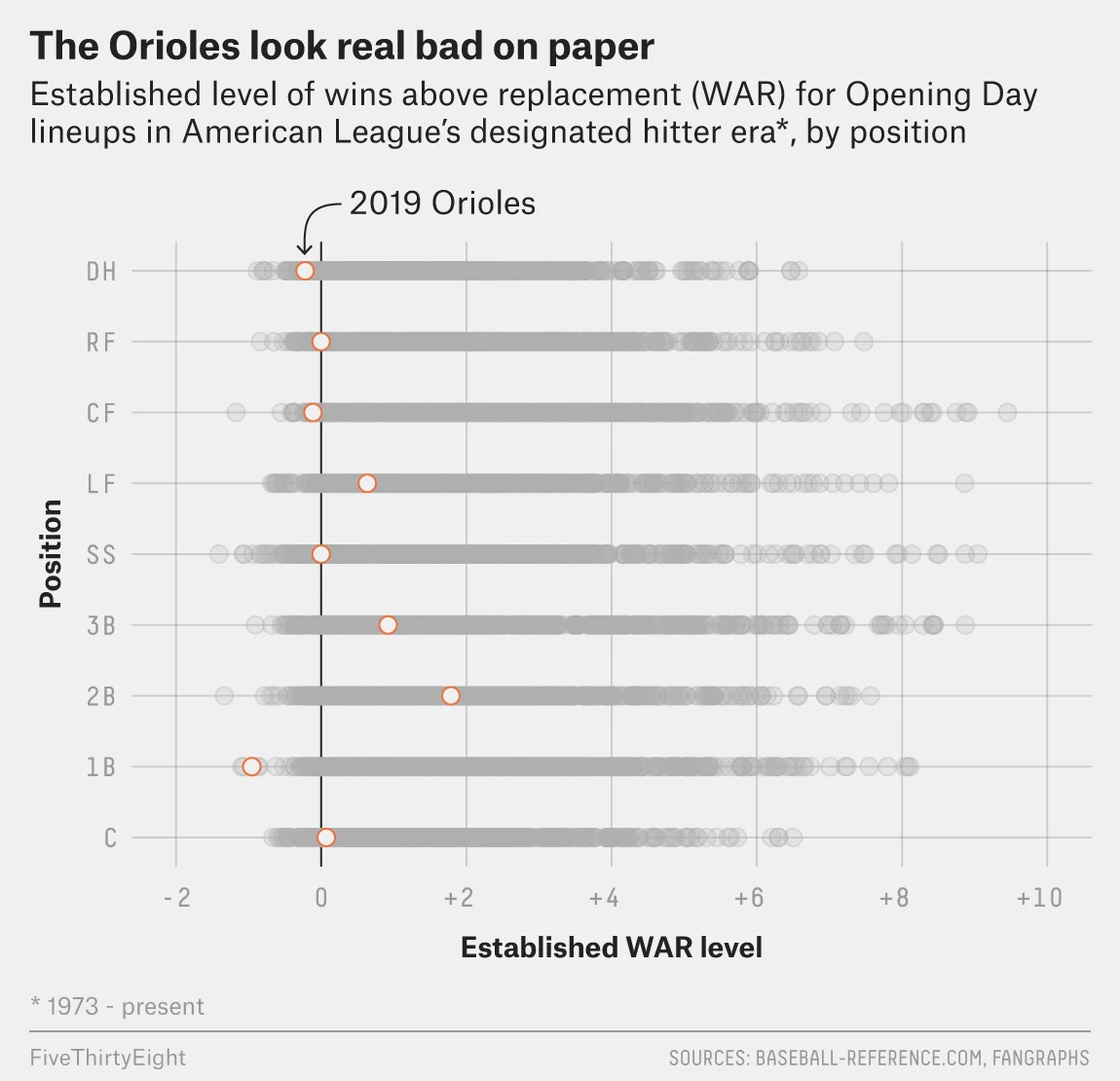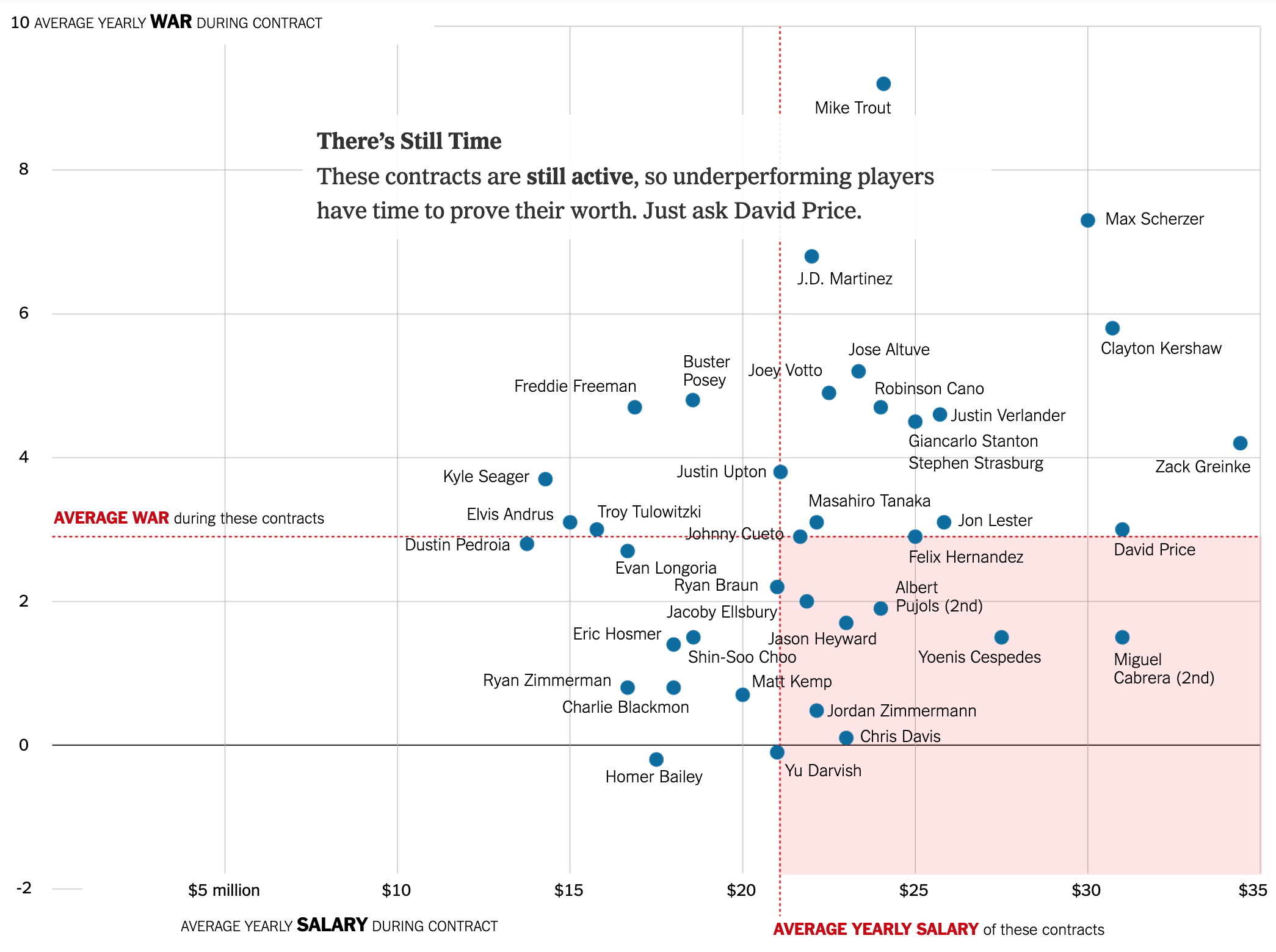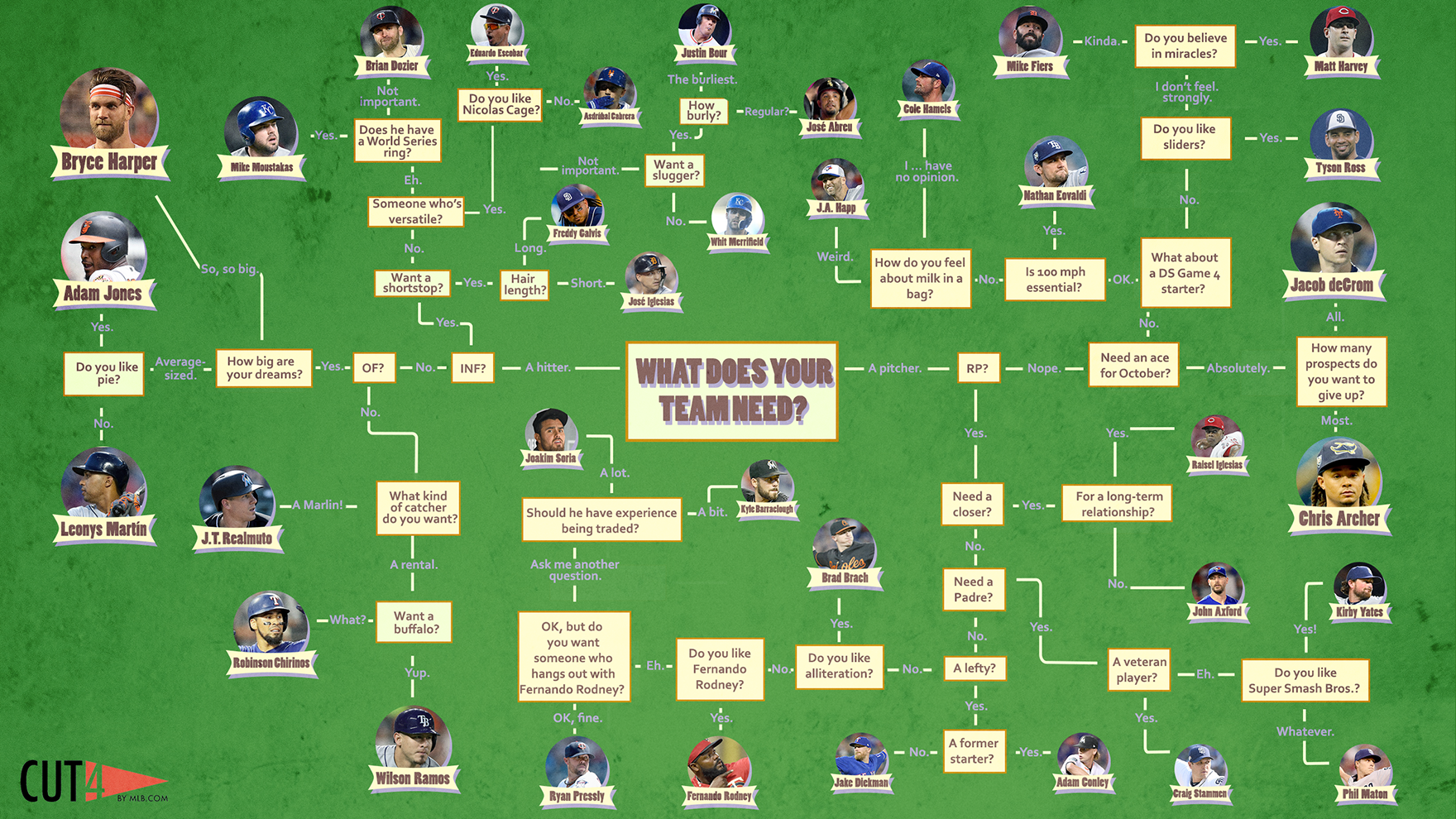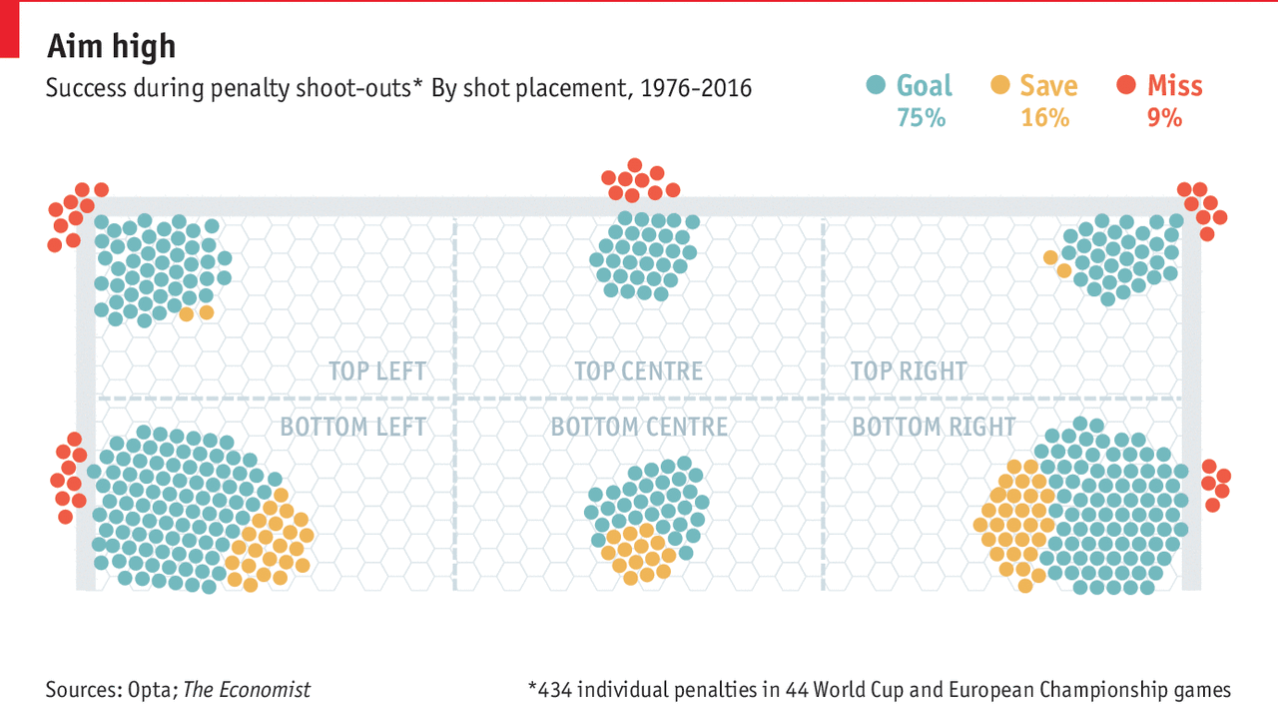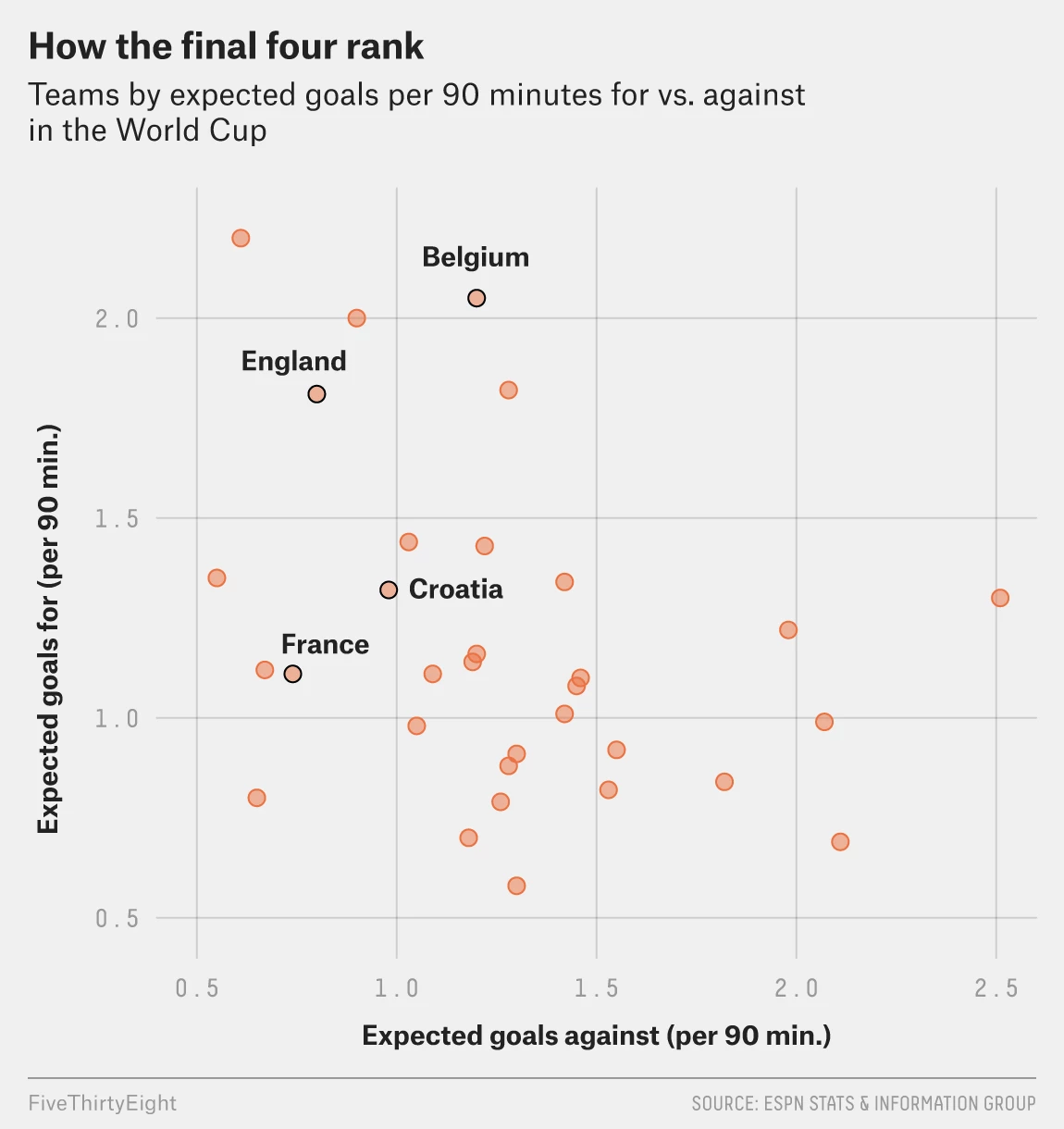The World Series began Tuesday night. But, as many people reading this blog will know, baseball is not exactly a global sport. But is it really? CityLab looked at the origin of Major League Baseball players and it turns out that almost 30% of the players today are from outside the United States. They have a number of charts and graphics that explore the places of birth of ball players. But one of the things I learned is just how many players hail from the Dominican Republic—since 2000, 12% of all players.
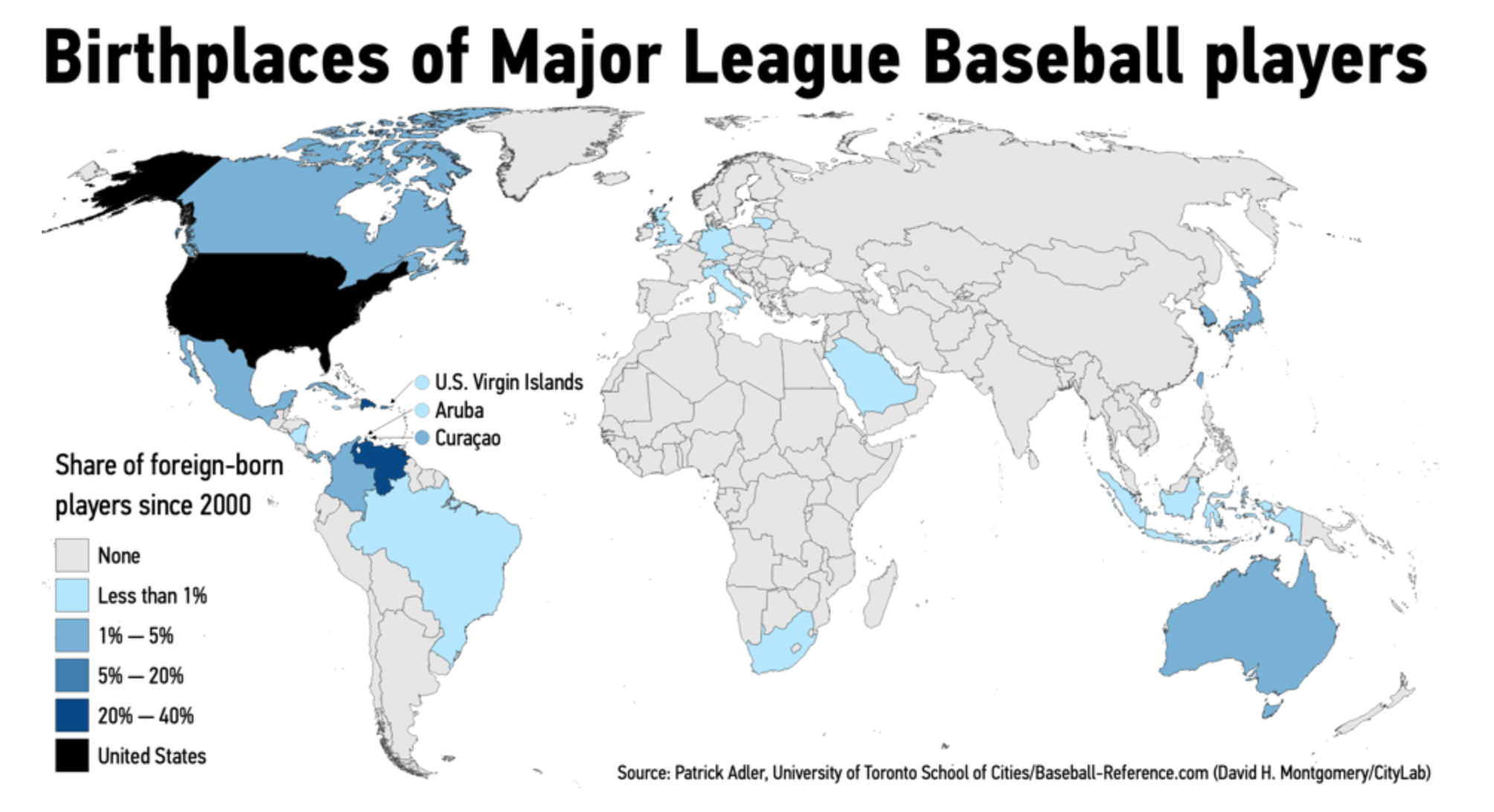
The choropleth here is an interesting choice. It’s a default choice, so I understand it. But when so many countries that are being highlighted are small islands in the Caribbean, a geographically accurate map might not be the ideal choice. Really, this map highlights from just how few countries MLB ball players originate.
Fortunately the other graphics work really well. We get bar charts about which cities provide MLB rosters. But the one I really enjoy is where they account for the overall size of cities and see which cities, for every 100,000 people, provide the most ballplayers.
One of the other things I want to pick on, however, is the inclusion of Puerto Rico. In the dataset, the designers included it as a foreign country. When, you know, it’s part of the United States.
Credit for the piece goes to David H. Montgomery.


